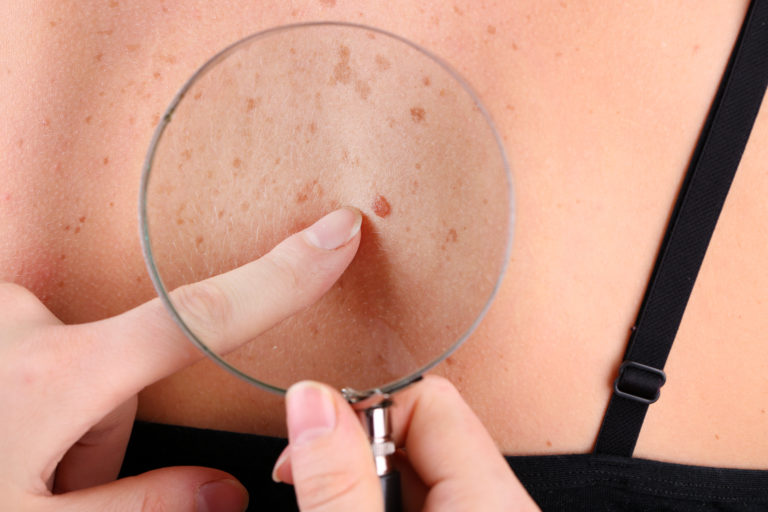Sharpen your skin cancer detective skills……

It’s like solving a mystery. But without any clothes on.
What does it take to be a deputy dermatologist? Well when it comes to skin cancer, a little dedication and the right knowledge will do the trick!
First you’ll need some tools
Grab a hand mirror. Find a full body mirror. And get ready to check your birthday suit out front and back. To zoom in on a suspicious growth, your phone camera – in true selfie mode! – may come in handy. And don’t forget to take notes – keeping a written journal will help you track changes in your skin over time.
Brush up on the signs and symptoms of skin cancer
Let’s start with moles – we all have them and we all get new moles. But these innocent little dots on our skin may be a whole lot more dangerous than they seem. Many malignant melanomas (which are the skin cancers that are the most serious) start in moles, or at least a spot that looks like a mole. Checking for signs of melanoma is as easy as learning your ABCs (and Ds and Es).
A – Asymmetry. If you draw an imaginary (or go for it and make it real) line down the middle of your mole and both sides do not match, that’s a warning. Take note.
B – Border. The edges of your mole should look like a clean line. If the mole has a jagged border it’s trying to tell you something, such as “see your dermatologist!” And you should, as the spot might be an early melanoma.
C – Color. Normal moles have one color. They may be dark brown, they may be raised and flesh- colored. But moles with more than one shade or color are suspicious. Mark those in the abnormal column.
D – Diameter. Bigger is definitely NOT better. If your mole is bigger around than a pencil eraser, make a note and get it seen by a dermatologist.
E – Evolving. Change might be good and natural in every other area of life, but changes of any kind in moles is cause for concern. Yep, time to see your doctor.
Melanoma is a dangerous, spreading form of cancer that will affect hundreds of thousands of people in the U.S. every year and is expected to cause the death of more than 7,000 people just this year.
And don’t forget the other types of skin cancer
The other, non-melanoma forms of skin cancer are rarely deadly but they’re nothing to mess around with. They’re also almost an epidemic. Basal Cell Carcinoma and Squamous Cell Carcinoma combined will affect more than 5 million people in the U.S. this year (yikes!) and they are not kind to the skin and appearance. You may have nonmelanoma skin cancer if you see:
- Raised bumps or nodules
- Non-healing pimples or sores
- Red, scaly patches with irregular borders
- Pink growths
- Lesions that are shiny or pearl-like in color or appearance
- Lesions typically occur on the face, scalp, ears, chest and back
- Wart-like growths that bleed or crust over
Scroll, tap, swipe on over
Annual screenings with a Board Certified Dermatologist are the best way to spot early sun damage and uncover skin lesions that need to be removed for your best protection. So scroll, tap, swipe – whatever it is you like to do best – and call us at (402) 933-0800.Or make an on-line appointment at midwestderm.com. And then set your calendar for yearly appointment reminders.
Well, Deputy, Detective, whatever you call yourself, you did it! Feel free to train other investigators and get the word out about skin cancer detection here at Midwest Dermatology.
